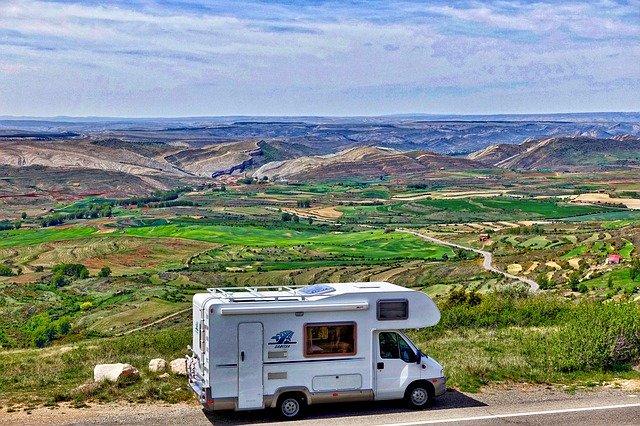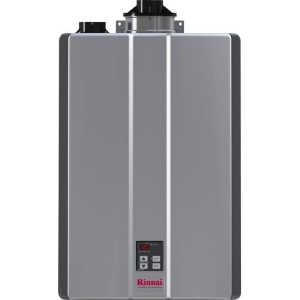- Home
- RV water heaters
RV Water Heaters
Review and Buying Tips
 Image by Siggy Nowak from Pixabay
Image by Siggy Nowak from PixabayFinding the best RV water heaters for your mobile and recreational vehicle, so you can travel with the comfort of your home and use hot water anytime and anywhere. What is DSI? Gas vs. electric, Atwood vs. Suburban. Do you have a problem with a heater and hot water? Use the following troubleshooting tips for easy repair. Find out how to keep your RV water heater efficient and safe.
Types of RV water heaters
For first-time users it is good to know what these devices are and do we really need them. RV hot water heaters are small and lightweight appliances that are designed to provide hot water in your RV while traveling or camping, for example. Prepared hot water can be used in the same manner as you would use it at home; to take a shower, clean the dishes, or clothes.
There are two main categories - tank and tankless, and a few options:
- RV water heaters powered by propane (LP) gas
- Electric heaters
- Heaters that utilize engine's heat
- Combination propane/electric
Tank-type
 Suburban
SuburbanThe storage tank of the heater is the place where the cold water enters for heating and where hot water is stored for use. The incoming cold water comes from the home plumbing through the inlet tube or dip tube to the lower part of the tank.
Most of the water heaters designed for RV use are the tank-type style, and they come with capacities from as low as 4 gallons to large 16-gallon sizes.
The most common and popular size is the 6-gallon unit, which is good enough for a decent shower or a smaller amount of dishes. Good examples are the following top-selling units on Amazon; Suburban 5117A and Atwood 96110.
These devices are usually installed outside the RV which makes them convenient to service without entering the vehicle. The outside installation allows easy access to the exterior door, and that eliminates the need for the service technician to enter your vehicle.
RV hot water heaters are designed to mount correctly and flush in the RV sidewall for the nicer look. Also, most of the manufacturers of the RV water heaters; Atwood, Suburban, and others, offer matching access doors, which ensures a clean and attractive exterior of your coach.
RV water heaters are equipped with all the necessary components for a compact, safe and lightweight package. This includes a small, insulated tank and multiple protection features such as those against the high temperature or pressure.
Water is heated either by the heating elements (electric type) or gas burner (gas type) and as it is becoming hot, it rises to the top from where it is going through the plumbing to the hot water tap (once it is open).
Every gallon of hot water that exits the water tank heater is then being replaced by the cold water again through the dip tube. The thermostat, which measures the temperature of the water inside the tank, is what signals the heater to start heating by charging the heating element(s).
Tankless
Tankless water heaters do not store water; they heat water on demand while delivering an endless supply, as long as there is a sufficient amount of fuel. Yes, they can cost more, but the advantages are improved energy savings since there is no standby heat loss from the standing water. Tankless are smaller than tank-type and less prone to leaks. One of the popular models is Girard.
Propane water heaters
Propane heaters are similar to gas heating units used in homes. They use a pilot light to light the gas used for heating. The combustion air must be supplied from outside the vehicle while products of combustion are vented out.
The ignition is pilot or electronic. The pilot is manually lit, and in a case when wind or other conditions extinguish the flame, you have to manually light it again, while some heaters use the automatic relight option. The safety features prevent the gas from leaks.
The electronic ignition is more convenient to operate since it uses a simple switch from inside the RV. These models, where you light the pilot at the touch of a switch from inside the cabin, are called Direct Spark Ignition or DSI models. Or, in short, instead of manual lighting, the unit will light automatically. This is the recommended option, and one can be purchased for a few hundred dollars, such as the Atwood GC6AA-10E.
Electric RV water heaters
RV hot water heaters can also use electricity and run either off the 120 V electrical hook-up or the generator. The heating elements which are used for water heating are screw-in or bolt-on type, and they are easily replaceable if the malfunction occurs.
Engine Heat RV water heaters - Motor-aid
In this application, the heat exchanger is used to transfer the heat, generated by the engine and through the coolant system to the water. This is a very economical and practical way of water heating and is usually combined with other sources, so when you arrive at the destination hot water is ready for use.
Combination type
Combination water heaters are usually operated on both LP gas and 120-volt electric option. The propane option is used when there is no electricity available, while the electric when you run out of gas or want to conserve the fuel. Both lighting options; manual and DSI are available.
Manufacturers
The leading manufacturers of RV water heaters are Atwood and Suburban. They both offer several models that run on electricity, propane gas, engine heat, or combined.
There are also tankless-type heaters such as Girard that do not have a storage tank but a heat exchanger. These models are lighter than tank-type, use less energy, and are producing hot water on demand with no recovery time.
Atwood vs. Suburban
The main difference between these two brands is that Atwood uses an aluminum clad tank, which eliminates the need for the anode rod and makes them lighter, while Suburban uses this metal tank and the anode against corrosion.
Also, Suburban offers five different sizes, ranging from 4 to 16 gallons, while Atwood has only two; six and ten gallons.
Top selling models
Atwood 96110
Users like
- Very affordable
- Nice and simple design
- Lightweight aluminum water storage tank
- No anode – no stinky odor – less maintenance
- It comes with the door and hinge assembly
- Proper insulation keeps the water hot for a long time
Users don’t like
- Frequent complaints about the pilot.
- Complaints about customer service
Suburban 5117A
Users like
- Affordable price
- Easy installation
- It doesn’t require electricity
- Reliable
- Efficient
- Simple
Users don’t like
- Some issues with the pilot
- It doesn’t come with the door
Girard 2GWHAM tankless water heater
User like
- Endless hot water
- On-demand heating
- Saves on propane
- Long showers
- Easy installation (in some cases, no need to modify connections from the old unit)
- It fits into the space of an old tank-type unit
Users don’t like
- Expensive - over $500
- The minimum flow rate is required.
- Complaints about the technical support
- Several complaints that it stopped working after a few weeks
Note: If planning to replace your old RV water heater with another brand, you have to check the model size, sidewall cut-out, and depth dimensions.
Keeping the heater efficient from year to year
One of the best ways to keep your RV water heater running smoothly is to protect it from sediment build-up and other deposits. That is why it is recommended to inspect and clean the unit and its elements, especially at the end of the season or before.
For example, if the heating element on the electric unit, or the gas burner on the gas-type, is not performing as expected, you might have an issue with the sediment deposits, and that will require you to clean or replace the element. Also, due to the same reasons, water might be dripping from the relief valve.
For the propane unit, check the vents and exterior door screen, and ensure that there are no obstacles to affect the air flow.
On the Suburban heaters, inspect the anode rod for deterioration and replace it if needed.
One solution is to use the filters. The other one is to flush the system regularly. The best is to consult the manufacturer’s instructions or expert advice.
Winterizing is another must to perform operations. To protect the heater from harsh weather, drain the unit and clear water from all the lines.
Summary
As we like the comfort of our home, we often desire to have the same luxury and convenience when away, camping or RV-ing, for example. That is why it is normal to expect when we buy or rent an RV that water heaters and hot water are available. The odds are, either Atwood or Suburban is to be found in such vehicles, as they are the most popular amongst tank-type, offering some great features as described in its detailed reviews.
Q&A
Q: Can I put antifreeze in my RV water heater?
A: Yes, you can. According to some experts, it is recommended especially if you live in colder regions. Using antifreeze should be part of your winterizing checklist as a preventive measure to protect the RV plumbing system and related components from freezing temperatures. Depending on the layout and length of the plumbing lines, you would usually put a few gallons of non-toxic (food-grade) RV antifreeze. Do not use automotive antifreeze as it is toxic. Use the Ethanol-based, Propylene glycol, or a blend.
There is no need to add antifreeze to the water tank, which is why you need a bypass to install unless it is already built-in. You would also need a circulation pump. You can also use this website for detailed instructions about winterizing with antifreeze.
According to the manufacturers, Atwood, for example, including some pros, it is enough to drain the tank and flush it with the air pressure or freshwater. A water heater drain plug and pressure relief valve should be open while draining.
Related
- Home
- RV water heaters



